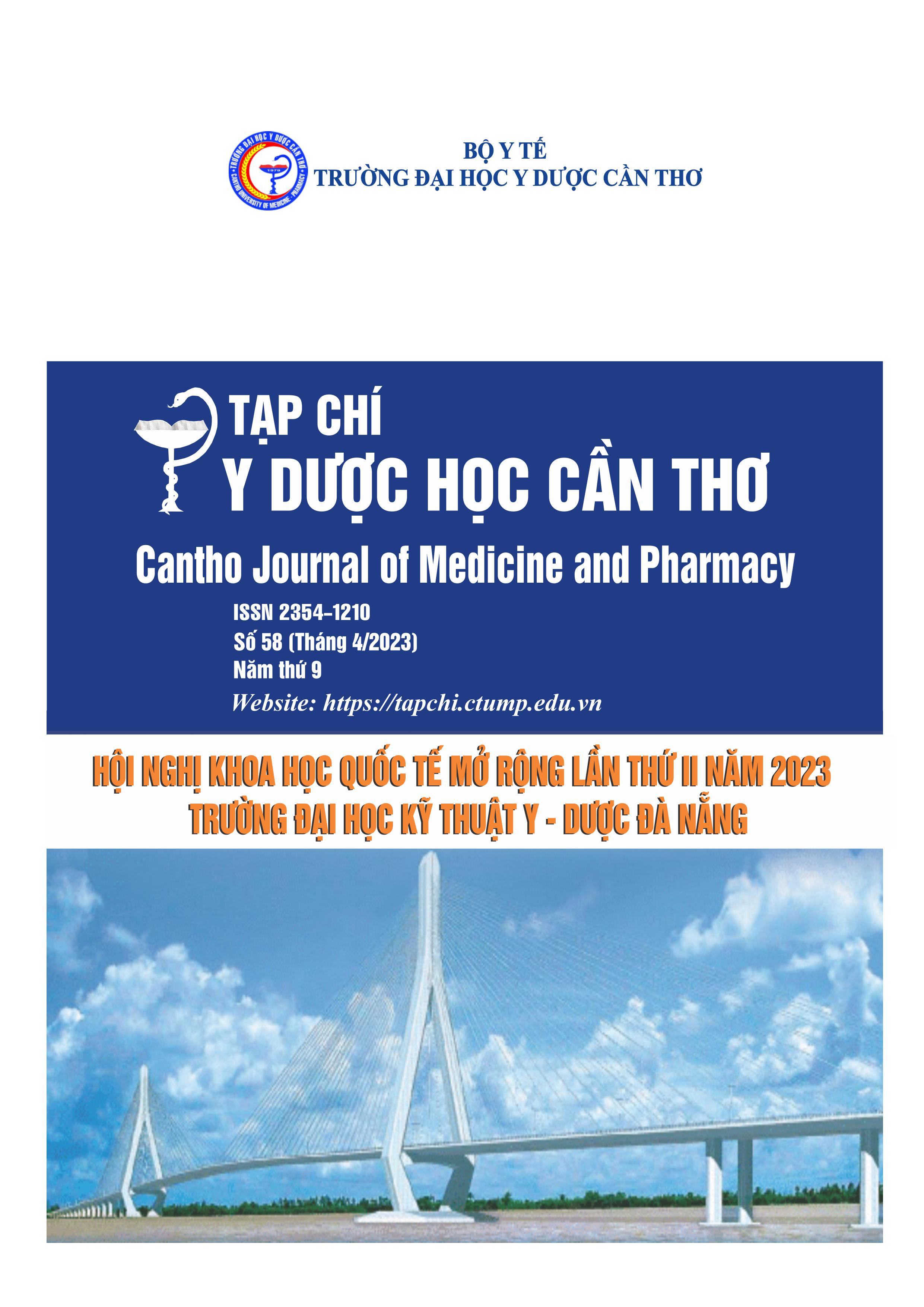RESEARCH ON THE SITUATION OF DEPRESSION IN HIGH-RISK PREGNANT WOMEN WHO ARE TAKING TREATMENT AT DA NANG HOSPITAL FOR WOMEN AND CHILDREN
Main Article Content
Abstract
Background: Unless the depression in pregnant women is not diagnosed and treated early, it will cause serious harms for both mothers and babies, especially it can make high-risk pregnant women increase the risk of preterm births, giving birth to a low birth weight babies, and it also affects the children’s mental development and personality in the future; or increases the risk of postpartum depression, mental illnesses for the female parents. Objectives: To determine the rate of depression according to the Edinburgh scale (EPDS) and investigating some factors related to depression in highrisk pregnant women being treated in Da Nang Hospital for women and children. Materials and method: A cross-sectional descriptive study was conducted on 312 high-risk pregnant women being treated at the Obstetrics Department, Da Nang Hospital for Women and Children from February to September 2022. Results: The rate of depression in high-risk pregnant women was 36.5% and found several factors associated with depression in the study participants: living alone; history of Covid-19 infection; blood diseases; smoking; unexpected pregnancy; sleep disorders; and other relevant anxieties and depression (p<0.05). Conclusion: The rate of depression in high-risk pregnant women tends to increase. Besides the factors related to medical history, some psychological and social elements also play a vital role in increasing depression levels.
Article Details
Keywords
High-risk pregnancy, depression, Edinburgh prenatal depression scale (EPDS)
References
2. Trần Thị Trúc Phương, Tô Mai Xuân Hồng (2021), “Khảo sát tỉ lệ trầm cảm và các yếu tố liên quan trên phụ nữ mang thai ở 3 tháng cuối thai kỳ tại bệnh viện Nguyễn Tri Phương”, Tạp Chí Y học Việt Nam, 504.
3. Fenglian X., Lynette R., Colin B., et al., (2018), “Anaemia and depression before and after birth: a cohort study based on linked population data”, BMC Psychiatry, pp. 18-224.
4. Gaillard A., Le Strat Y., Mandelbrot L., et al., (2014), “Predictors of postpartum depression: Prospective study of 264 women followed during pregnancy and postpartum”, Psychiatry Res, 215(2), pp. 341-346.
5. Hewitt CE, Gilbody SM, Mann R, et al., (2010), “Instruments to identify post-natal depression: Which methods have been the most extensively validated, in what setting and in which language?", International Journal of Psychiatry in Clinical Practice, 14, pp. 72-76.
6. Hu Y., Wang Y., Wen S., et al., (2019), “Association between social and family support and antenatal depression: a hospital-based study in Chengdu, China”, BMC Pregnancy and Childbirth, pp. 19-420.
7. Lépine J.-P., Briley M. (2011), “The increasing burden of depression”, Neuropsychiatr Dis Treat, 7 (Suppl 1), pp. 3-7.
8. Mai Thi Hue, Nguyen Hang Nguyet Van, Phung Phuong Nha, et al., (2020). Factors associated with antenatal depression among pregnant women in Vietnam: A multisite cross-sectional survey. Health Psychol Open.
9. Van Ngo T., Gammeltoft T., Nguyen H.T.T., et al., (2018), “Antenatal depressive symptoms and adverse birth outcomes in Hanoi, Vietnam”, PLoS ONE, 13, pp. E0206650.
10. Payne J., Bajaj M., Salimgaraev R., et al., (2022), “Rates of self-reported postpartum depressive symptoms in the United States before and after the start of the COVID-19 pandemic”, Journal of Psychiatric Research
11. Pooler J., Perry D.F., Ghandour R.M, (2013), “Prevalence and Risk Factors for Postpartum Depressive Symptoms Among Women Enrolled in WIC”, Matern Child Health J, 17(10), pp. 1969-1980.
12. Sheeba B., Nath A., Metgud C., et al., (2019), “Prenatal Depression and Its Associated Risk Factors Among Pregnant Women in Bangalore: A Hospital Based Prevalence Study”, Journal Frontiers in Public Health.
13. Sidhu G.S., Sidhu T.K., Kaur P., et al., (2019), “Evaluation of peripartum depression in females”, International Journal of Applied & Basic Medical Research, 9, pp. 201-205.
14. Nhi T.T., Hanh N.T.T., Gammeltoft T.M, (2018), “Emotional violence and maternal mental health: A qualitative study among women in northern Vietnam”, BMC Women’s Health, pp. 18-58
15. Zegeye A., Alebel A., Gebrie A., et al., (2018), “Prevalence and determinants of antenatal depression among pregnant women in Ethiopia: a systematic review and meta-analysis”, BMC Pregnancy and Childbirth, pp. 18-462.


